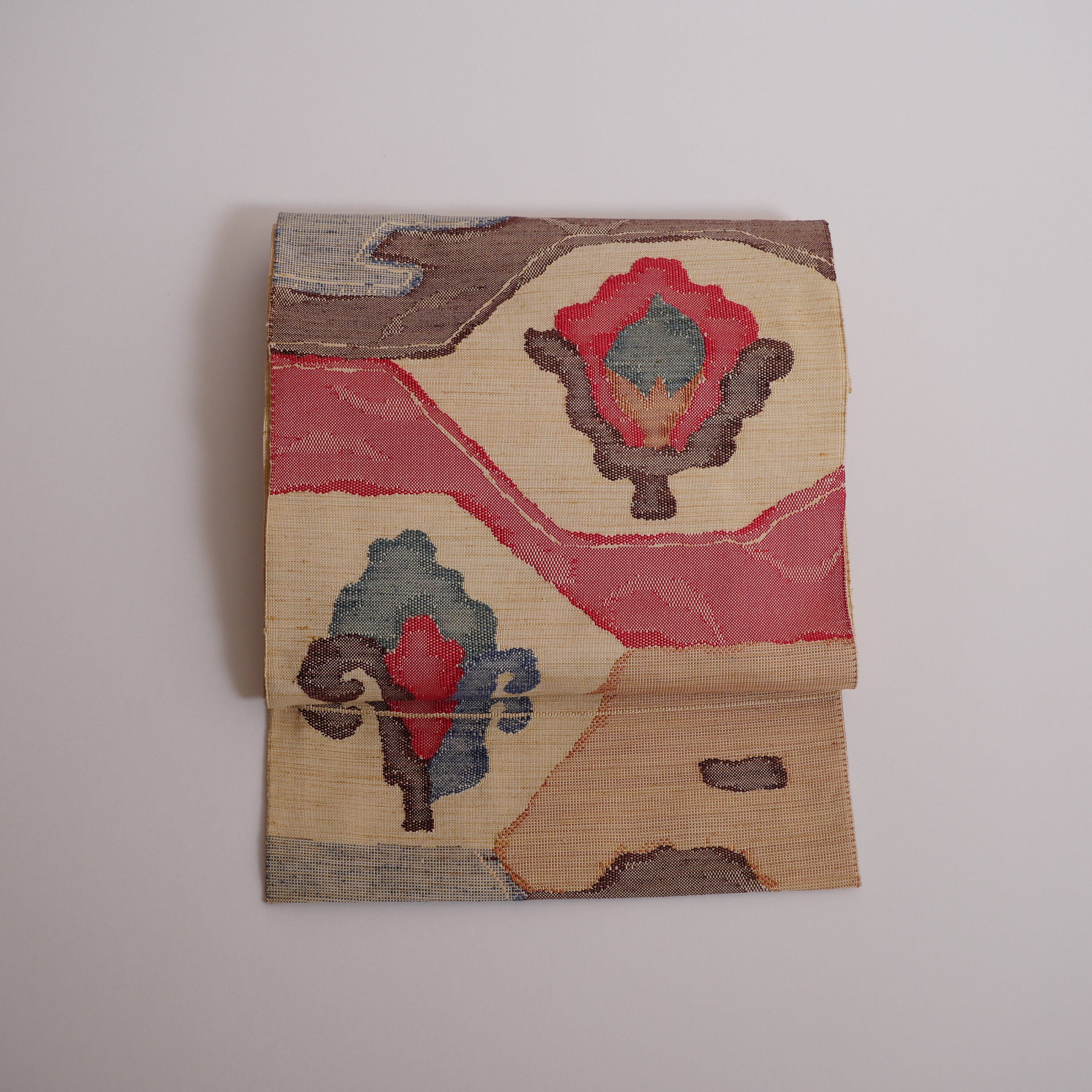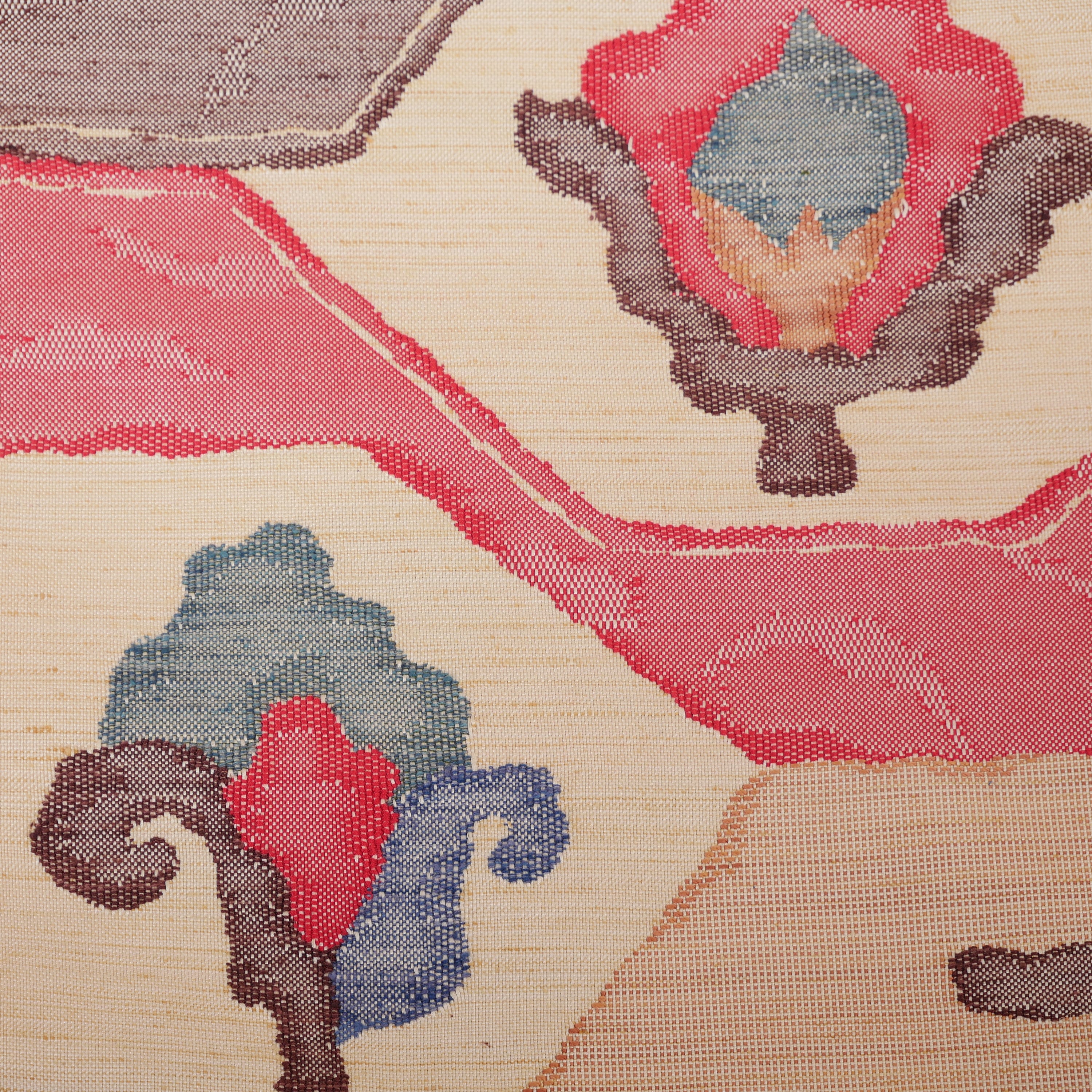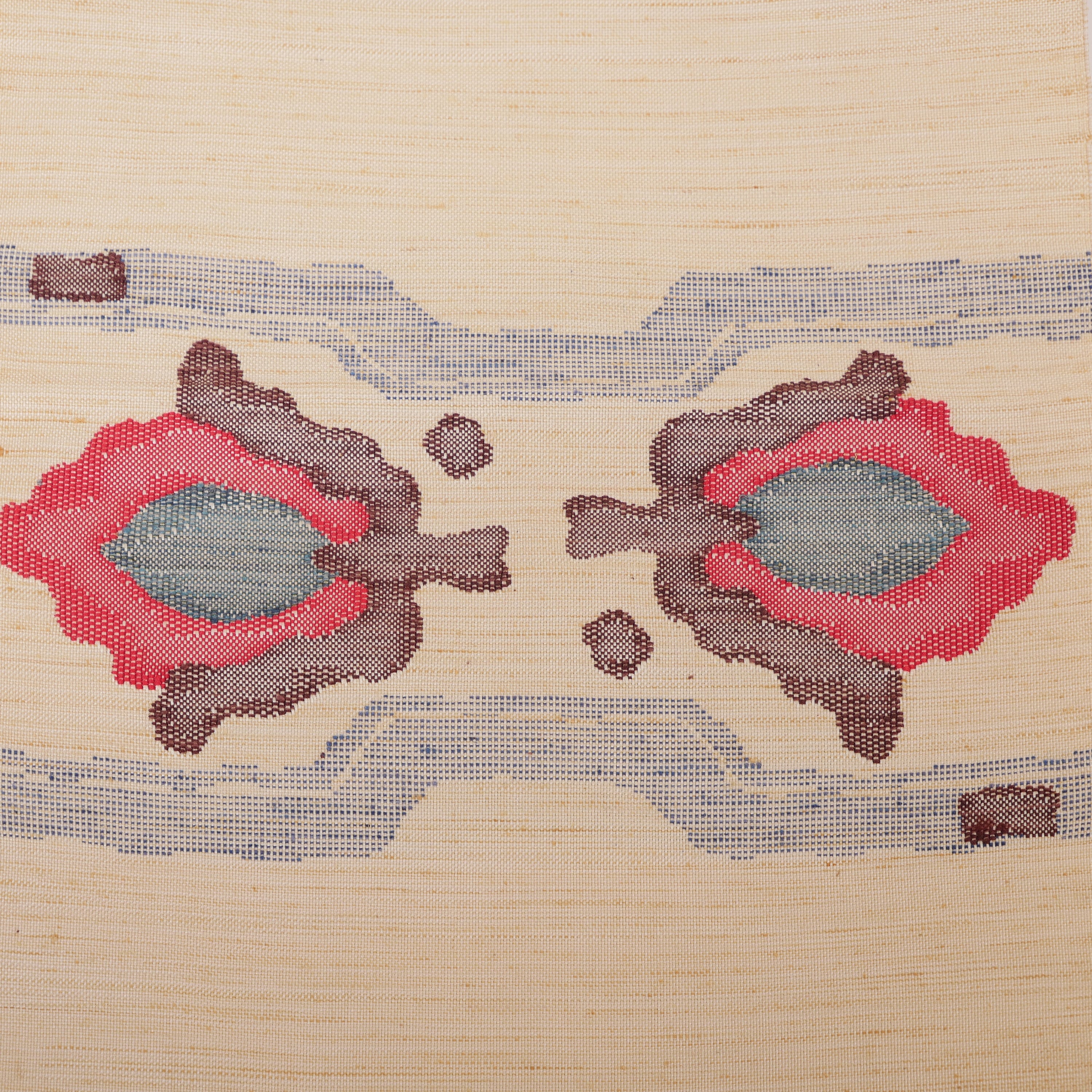花模様 ヴィンテージ紬八寸名古屋帯 | Vintage beige tsumugi silk hassun nagoya obi with floral design
¥10,000
こちらの帯の特徴は、ベージュ色の背景に赤、青、オレンジの織りの花模様です。
ざらざらした質感となっています。
また裏地のない帯になりますので織りの糸が裏側手先に見られます。(写真を参考にして下さい)
小さな金色の刺繍で西陣いづくらとあります。
(京都の西陣織物生産地の織工です。)
紬(つむぎ)とは…紬糸で織られた絹織物。蚕の繭から糸を繰り出し、撚り(ヨリ)をかけて丈夫な糸に仕上げて織ったもので、例外的に木綿を素材とするものを称することがある。
ヴィンテージ品
状態:非常に良い
【サイズ】
長さ:3.57 m
幅:30 cm
【素材】
シルク
テクニック:織り
色:赤、青、茶、オレンジ
デザイン:花模様
###
Vintage beige tsumugi silk hassun nagoya obi with floral design. The obi features a woven flower pattern in red, blue and orange on a beige background. The design covers around 60% of the outside visible part of the obi (rokutsuu gara). Tsumugi is silk woven from handspun silk floss resulting in a rough/nubby texture. Since this is an unlined obi the free-floating back of the weave is visible on the reverse side of the font (tesaki).
This is a hassun nagoya obi. Hassun nagoya obi are not lined, the fabric for hassun nagoya obi is woven longer so that part of the fabric can be folded back in order to "stiffen" the otaiko (drum) area without the use of a core (obi-shin). Hassun, meaning eight "sun" (ca. 31 cm), refers to the width of the woven fabric.
The obi is finished matsuba style with a very short folded tesaki area (side opposite of the drum).
There is a small gold stitched Idzukura text on the back of the folded drum area. Nishijin Idzukura Textile (西陣いづくら織物) is a weaver from the Nishijin textile producing district in Kyoto.
Obi can be used as-is (to wear, as a table runner, or a wall decoration), or depending on the material can be used for re-make (i.e., luncheon mats, pillow covers, bags, etc.)
Length: 3.57 m
Width: 30 cm
Weight: 480 g
Type: hassun nagoya obi, rokutsuu gara, matsuba shitate
Style: casual (fudangi) - semi-formal (oshare)
Age: vintage
Condition: excellent, wearable
Material: tsumugi silk
Technique: woven
Color: beige, red, blue, brown
Design: stylized floral
Labels: Idzukura (back of drum)
Obi are sashes (or belts) traditionally used to tighten a kimono, but now serve a mostly decorative role in complementing the kimono design and style. An obi is wrapped two times around the body, and depending on the design is tightened with a simple or more elaborate knot.
The three most common types of obi based on their size are:
- Fukuro obi, this is the longest (4~4.5 m x 31 cm) and most formal type of obi. Since it is long it can be used to make elaborate knots or a simple double-layered drum (otaiko).
- Nagoya obi is the most common type of obi (3.5~3.8 m x 30 cm), and it can be worn both casual and semi-formal. The shorter size limits elaborate knots and the otaiko (drum) is single-layered.
- Han-Haba obi (half-width) is the most casual type of obi for daily-wear (3.5~4 m x 15 cm). The length allows for different types of knots. This is also the type of obi worn with yukata.
Note: In Japan, silk kimono (products) are called "shoken" which freely translated means "pure silk". In many cases, especially so with obi, additional materials are used such as gold and silver threads (kinginshi) for decoration, and a non-silk core (obi-shin) is used to provide stiffness. So although the main material is silk the finished product is not 100% silk.
###
748515110













